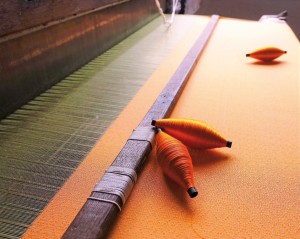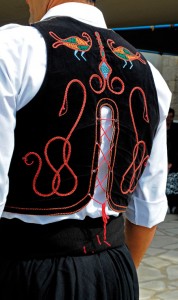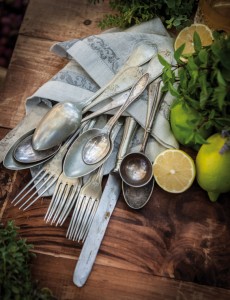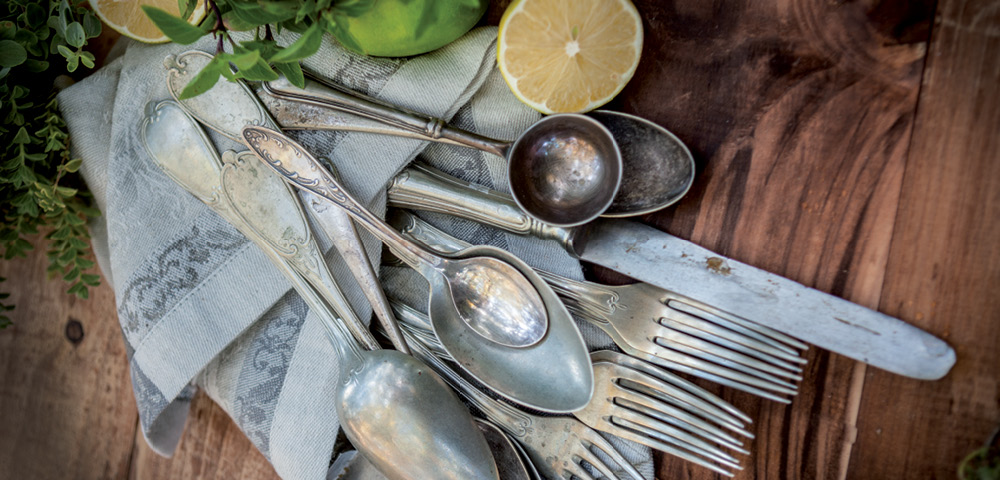With its temperament, vitality and spirituality, Folk Art constitutes the long heritage of Greece. These timeless, impulse-generated artefacts, which are neither cosmopolitan nor sophisticated, have dominated Greek life for over 3,000 years.
Greek folk art is by far the most genuine aesthetic expression of the common people. Recognized as a primary form of art, it often employs geometrical shapes (i.e. triangles, squares) and archetypal symbols (i.e. meanders, crosses) to illustrate with liveliness and imagination the social conscience of ordinary man, usually in the context of a specific community or place. Greek folk art affords an inexhaustible thematic range that manifests itself in a variety of forms: handicrafts (such as weaving, embroidery, pottery, metallurgy and woodwork), painting, iconography, marble sculpture and so on.
HANDICRAFTS—the most popular form of folk art—enjoy a very strong bond with civilization and culture and are highly utilitarian in nature. Beautiful decorative and functional objects, made almost entirely by hand, attest to the extrovert nature of the Greek people and enable the prolonged survival of tradition. Unfortunately, in recent years, crafts have been on the decline for the very qualities that have made them distinctive once: their individuality, their non-uniformity, their uniqueness, their ephemeral and localised nature. Nonetheless, they still deserve our undivided attention.

A CRAFT HARD TO MASTER
WICKERWORK (OR BASKETWORK) is a craft that very few people are familiar with. As wickerwork is a demanding craft that requires precision and skill, there are not many who still practice it. Wicker baskets were originally used by Greek beekeepers who wanted to make artificial hives for wild bees. To make a wicker basket, the wicker-worker begins by making the skeleton. He takes 12 rods of osier and tightly ties them in circles so as to form a protrusion on the roof of the basket. He then places 12 canes on the ground, open in a star formation. He takes 3 rods from a climbing plant and starts knitting the roof until it is at 30 cm. He then bends the osiers and places them in a guide wire of the same diameter and continues knitting for another 5 cm. After that, he weaves with split reeds for about 20 cm more. When that is done, he splits the osier and makes a girdle to make the basket more durable. He uses canes again for 20 cm and then knits another belt with osier rods, etc. Easy eh?

THE ABANDONED CRAFT
WEAVING ON THE LOOM, its know-how, was passed down from grandmothers to daughters for centuries. Looms were wooden devices that held the warp threads in place while filling threads were woven through them. There was not a home without a loom given that it was used to provide necessities for the household, i.e. table cloths, rugs and kilims, blankets and pillowcases, etc. Woven kilims would often be hanged on the walls to warm the houses in cold weather. Housewives would spend countless hours producing works of art in the loom, and so would young women who would use it to make their entire dowries. Weavers could only weave a cloth as wide as their arm span and would use either wool, cotton or flax as raw material. If cloth needed to be wider, two people would do the task. Also, weavers were required to have very good hands-legs-eyes coordination, as their whole body participated in the job. Today, one might see wooden looms in villages, but very few are still in use.

CRAFTY AND ELEGANT
EMBROIDERY (OR NEEDLEWORK) was a means of expression and communication bequeathed with love, affection and passion from previous generations. In earlier times, this handicraft was very popular among women who practiced it to adorn personal clothing and costumes; with the needlework done on silk, cotton and wool thread or in thin gold and silver wire. It was also used for house decoration (bed curtains, draperies, sheets, runners, towels, cushions and pillow covers), and ecclesiastical embroidery; bearing that unique handmade seal. Each region was distinguished by the designs, the colours and materials used, as embroidery very often employed characteristic local motifs. Embroidery is, without doubt, the finest expression of Greek folk art.



THE SURVIVING CRAFT
METALWORK (OR METALLURGY) is an ancient craft of processing metals that flourished considerably during the years when the Greek popular arts were at their peak. At the time, metalware objects, mostly made of copper, iron, bronze and lead, were used for agricultural purposes and as ecclesiastical and household utensils. In the Minoan period, metals were used to make excellent jewellery items. It was the great demand for metal utensils that ultimately led to the division of labour and the specialization of craftsmen according to the type of metal they worked on and the objects they made. Metalwork in Greece has a long tradition, stretching from the Chalcolithic period all the way to recent years.
Written by Marianna Avouri


